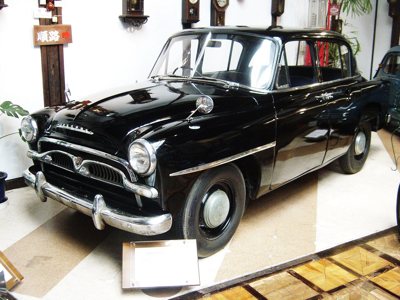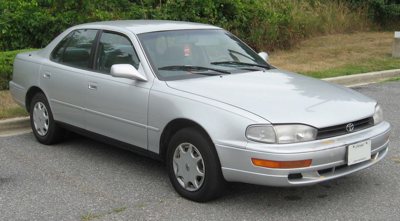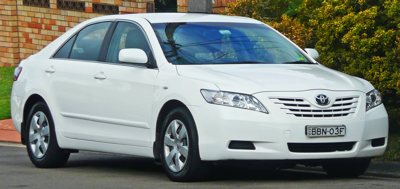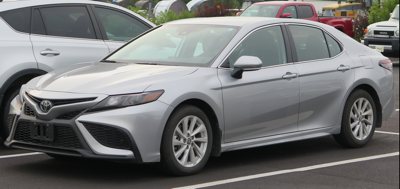Ask any car owner what they are looking for in a car, and you'll more likely get 'fuel efficiency' as the answer. In fact, 66% of US adults choose fuel efficiency as their top priority when trying to purchase a new vehicle.
 With car brands worldwide vying to be the most fuel-friendly vehicle, not many names can rival Toyota in this category.
With car brands worldwide vying to be the most fuel-friendly vehicle, not many names can rival Toyota in this category.
Toyota's name became synonymous with fuel efficiency when they offered what the market particularly demanded during the 1970s.
Starting with a modest 288 units sold in its first foray into the US market in 1958, the company eventually gained ground during the 1960s, after which their Toyota Corona became part of the national car conversation.
Toyota would really establish itself as the choice of vehicle for those looking for fuel-efficient vehicles during the oil crisis of the 1970s. As fuel prices skyrocketed, more and more consumers opted for fuel-efficient vehicles. By the late 1970s, the Toyota Corolla became one of the best-selling car in the US.
Top Fuel Efficient Toyota Vehicles
When it comes to fuel efficiency, Toyota has a whole fleet of vehicles that offers better mileage than the competition. While traditional gas efficiency is still valued, Toyota has also taken full advantage of hybrid technology to push the limit of mileage and help their owners save on fuel.
If you're looking for a great fuel-efficient car from Toyota, here are your options:
- Toyota Sienna - the hybrid minivan can reach 36 miles per gallon.
- Toyota RAV4 Hybrid Prime - the plug-in hybrid version can reach 40 MPG, with its full EV version reaching 42 miles per full charge.
- Toyota Camry Hybrid - this sleek sedan boasts 52 MPG.
- Toyota Corolla Hybrid - the hybrid version of the classic car can get you 53 MPG.
- Toyota Prius - an icon in fuel efficiency, this Hybrid Hatchback is known for its 57 MPG range.
Toyota Camry
The Prius, Corolla, Sienna, and even RAV4 all have their respective reputations with consumers, but none of them are as popular as the Toyota Camry. First introduced in 1982 as the Toyota Celica Camry, and later renamed Toyota Camry in 1986 for the US market, the vehicle continues to impress consumers with its improvements in size, engine, and technology, adapting to changes in engine technology and consumer demands.
 Camry - 1st Generation Icon
Camry - 1st Generation Icon
The iconic Toyota Camry (1st Generation) was introduced as a replacement to the Toyota Corona in 1983. Building on the reputation of a fuel-efficient compact sedan, it delivered fuel efficiency with its 1.8L I4 engine featuring the Valvematic system.
As the first model, it is also the smallest, measuring 175.6 inches in length and 66.7 inches in width. Despite its size, it can still comfortably seat five passengers, including the driver.
Camry XV10 - From Compact to Midsize
The 3rd generation of Toyota Camry was the XV10. Introduced in 1992, the XV10 was 187.8 inches long and 69.9 inches wide. While there was little difference in width, the XV10 was a foot longer - making the car a midsize vehicle.
Its engine also received significant boost, with a 2.2L I4 engine under the hood. Although the engine was not exceptional in terms of acceleration as it could reach 60 MPH in 11.2 seconds but it made up for it in fuel efficiency since its estimated fuel consumption was only 9.5L per 100 km or 24.7 MPG.
 The Camry XV40 - Introducing the Hybrid Models
The Camry XV40 - Introducing the Hybrid Models
The 4th (XV20) and 5th (XV30) generations of Toyota Camry are longer in length (189.2 in/70.1in) with similar overall dimensions.
Improvements on these types of vehicles are often found under the hood. This is also true of the XV40 or the 6th generation of Toyota Camry. It retained the same length with a very slight increase in width (71.7).
The 6th generation of Toyota Camry is the first vehicle that takes advantage of hybrid technology. Even though it was already known for fuel efficiency, Toyota did not rest on its laurels and pushed its Camry to the next level of fuel mileage - with its 2.5L Hybrid Engine delivering 26 MPG.
 Camry XV70
Camry XV70
The 8th and latest generation of Toyota Camry - the XV70, is the biggest to date (192.1 in/72.4 in). It is also the most advanced in terms of design, performance and efficiency. With its bold sleek look and racing design, it's a head turner for a mid-sized sedan. The XV70's 2.5L Hybrid engine delivers up to 28 MPG combined.
Beyond its impressive design and features, it offers a glimpse into future designs for Toyota Camry. Toyota normally retains the size and look of its Camry for two or more generations which means the 9th generation will still be the same. But even with the same size, the next generation of Camry will definitely feature additional improvement in its performance and mileage. There are no plans for a full EV yet but the hybrid engines are more than enough for many consumers when it comes to fuel efficiency.
Toyota's Vision For Future Vehicles
According to its "Vision 2030" roadmap, Toyota's vision for future cars is actually centered on 3 things - sustainability, innovation, and connectivity. Toyota may explore adjustments in vehicle sizes and design to accommodate this vision.
